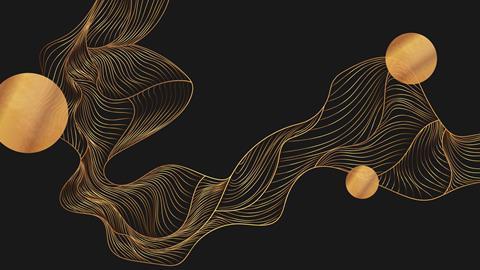Dutch research funding organisation NWO rewards 97 researchers with a Vidi grant, which also means a boost for the molecular research field.
The 2023 Vidi grants were announced today. These grants, amounting to (a maximum of) €800,000, are intended to enable experienced researchers to set up their own, innovative research line and to appoint other researchers (PhD students or postdocs) for this purpose. The 97 Vidi laureates include five members of the KNCV (Royal Netherlands Chemical Society) and two of the NVBMB (Netherlands Society for Biochemistry and Molecular Biology). In alphabetical order:
Maike Hansen, PhD, Radboud University (KNCV)
How do cells turn their noise up or down?
Cells in our body can be seen as a mini-factory, where there is an assembly line that creates proteins as a final product. The amount of protein each cell makes can vary drastically between even genetically identical cells, this is called noise. Individual steps in this assembly can turn up or down the protein noise. For instance, increasing noise is a phenomenon associated with antibiotic resistance in bacteria or diseases such as HIV and cancer. This project determines how cells can regulate noise, which will improve the understanding of how defects in noise-regulation can result in disease.
Maike Hansen was featured earlier this year in C2W | Mens & Molecule and C2W International
Johannes Klein, PhD, University of Groningen (KNCV)
Gold and oxygen: Turning foes into friends
This project investigates the troubled relationship between the elements gold and oxygen and how this relationship can be remedied to develop new tools for the modification of organic compounds. These new tools will use two gold atoms to create new catalysts and use light to activate them. In these catalysts the two gold centres will communicate with each other to jointly convince oxygen-based ligands to participate in new reactions.
Linn Leppert, PhD, University of Twente (KNCV)
“Catch A Wave” – Directing Energy- and Charge-Transfer in Soft Materials
Shining light on a material can lead to transport of energy and charges. Nature exploits these processes to efficiently convert the energy of sunlight into chemical energy in photosynthesis. In technological applications, however, the flow of energy and charges is often inefficient, slow, and random. This project’s goal is to understand how to direct energy- and charge-transfer through the wave-like motion of atoms in soft materials. For that purpose, the researchers will develop methods for large-scale computer simulations of the quantum-mechanical processes underpinning energy- and charge-transfer in light-converting materials.
Janne-Mieke Meijer, PhD, Eindhoven University of Technology (KNCV)
Unravelling the origin of disorder during self-assembly
The spontaneous self-assembly of nano- and microparticles is used today for the development of new materials. Unfortunately, for building blocks with specific shapes and interactions our understanding of the origin of disorder during the assembly process is lacking and we cannot control the process. This limits the fabrication and exploitation of these new materials. In this project, the researchers will unravel on the smallest scale how during the self-assembly processes the particle properties lead to disorder. Based on this insight, also important for nano- and biomaterials, the researchers are going to create new materials that build themselves.
Fedor Miloserdov, PhD, Wageningen University & Research Centre (KNCV-Section Organic Chemistry)
Ru(0)-catalysis to make dreams of organic chemists come true
To meet the need of making modern chemistry more sustainable, scientists have to develop methods that are efficient, economical, and environmentally benign, while being capable of producing compounds of high molecular complexity. To achieve this goal, new synthetic tools are needed. This project is aimed at developing a new family of ruthenium-based catalysts for novel efficient enantioselective catalytic transformations.
Daan Swarts, PhD, Wageningen University & Research Centre (NVBMB)
Origin and evolution of RNA silencing pathways
After RNA transcription several processes take place that regulate the amount of RNA in the cell. An essential mechanism for regulation of RNA levels in insects, plants, animals, and humans, is RNA interference (RNAi), a complex process in which Argonaute proteins utilize small ‘guide’ RNAs to recognize and degrade target RNA molecules. How such complex processes evolved is largely unknown. In this project we will characterize newly identified Argonaute proteins that facilitate RNA interference in prokaryotes (bacteria/archaea). This will provide insights into how RNAi processes have evolved and will contribute to understanding these processes in other organisms.
Willem Velema, PhD, Radboud University (KNCV)
Investigating RNA-metabolite interactions with bespoke chemical tools
RNA is a versatile biomolecule that is implicated in virtually every process in the cell and is an important player in many diseases. In this program the researchers will study how RNA interacts with small molecules in the cell, so called metabolites. It is believed that the function of RNA is controlled by these metabolites, but to what extent this happens and the mechanisms involved remain unclear. Using state-of-the-art chemical tools, the researchers will demonstrate the biological significance of RNA-metabolite interactions.
Anne Wentink, PhD, Leiden University (NVBMB)
Untangling protein aggregates in neurodegenerative disease
When proteins aggregate into fibres, this can lead to serious neurodegenerative diseases such as Parkinson’s. The cell can combat the aggregation process by means of molecular chaperones, which can actively dissolve fibres once formed. Despite its seemingly protective function, this chaperone action is also potentially harmful, breaking fibres down to fragments that can accelerate further protein aggregation and escape to infect neighbouring cells. Here, researchers develop new experimental tools to assess the risks associated with chaperone activity in neurodegenerative disease and develop synthetic chaperone-like biomolecules that mitigate these risks.













Nog geen opmerkingen